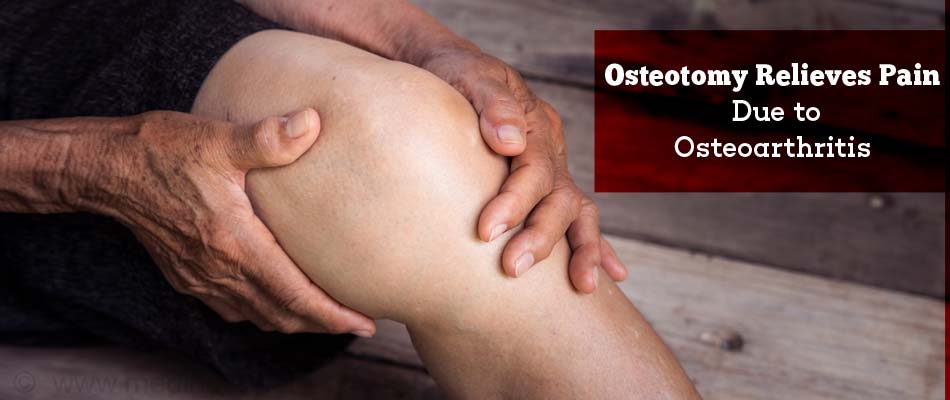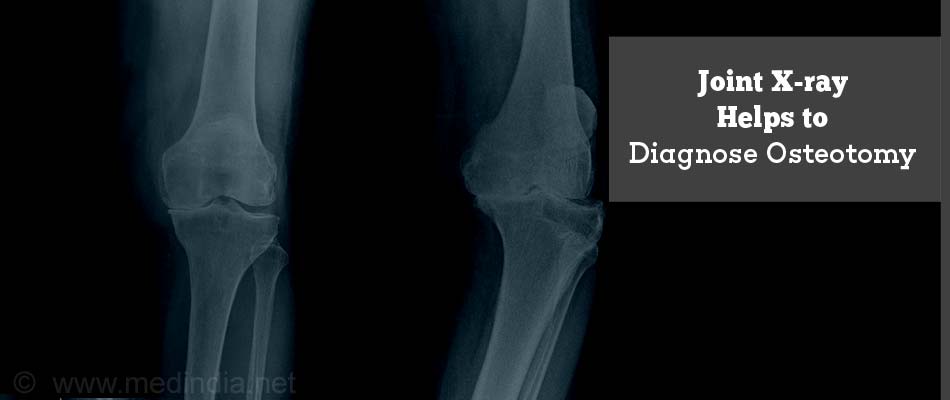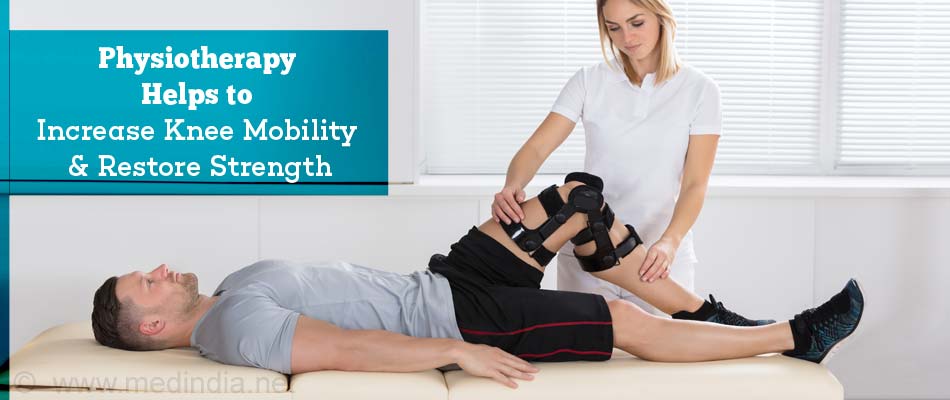What is Osteotomy?
Osteotomy is a surgical procedure that involves cutting the bone in order to shorten or lengthen it or to realign it with respect to another adjacent bone.
Osteotomy is a surgical procedure that involves cutting the bone in order to shorten or lengthen it or to realign it with respect to another adjacent bone.
There are several types of osteotomy depending on the part on which the surgery is performed:
An osteotomy is done for the following major reasons:
Routine Tests: For all patients who undergo an elective surgery (which is more planned), routine tests to evaluate the health status of the patient are required and include the following:
X-Ray and CT Scan: X-rays and computed tomography (CT) scans may be used to take images of the joint so that the area of the surgery can be carefully mapped. Sometimes, computer modeling is also used to do the mapping. This enables the surgeon to exactly calculate the size, dimensions and angles of the wedge that needs to be excised.
For a CT scan, you will be asked to lie down still on a special table for a few minutes. A doughnut-shaped instrument will pass over the part to be screened, and images will be taken. A contrast agent may be injected into your vein; therefore you should inform the radiologist if you suffer from any allergies.
Pre-operative Check-ups and Precautions: Routine tests as indicated above are ordered a few days before the surgery. Admission is required a day or two before the surgery. If you are on blood thinners or aspirin, these should be stopped a few days before the procedure.
Fasting on the Night Before Surgery: Overnight fasting is required and occasionally intravenous (IV) fluid may be required to keep you well hydrated. Sedation is sometimes required for good overnight sleep before the surgery.
Type of Anesthesia: Osteotomy can be done either under general anesthesia (GA) (which will put you to deep sleep) or spinal anesthesia (you will be awake but your body will be numb from the waist down).
Shift from the Room or Ward to the Waiting Area in the Operating Room: An hour or two before the surgery, you will be shifted to the operating room waiting area on a trolley. Once the surgical room is ready, you will be shifted to the operating room.
Shift to the Operating Room: The ambiance in the operating room can sometimes be very daunting and a small amount of sedation can help overcome your nervousness. From the trolley, you will be shifted on to the operating table.
Anesthesia Before Surgery: If the anesthetist decides to administer GA, you will be injected with drugs through an IV line and made to inhale some gases through a mask that will put you into a deep sleep for anesthesia. Once you are in deep sleep, a tube will be inserted into your mouth and windpipe to administer the anesthesia gases to overcome pain and keep you comfortable. If on the other hand the anesthetist decides to administer spinal anesthesia, you will be given an injection into the lumbar region of your backbone (vertebral column), which will numb your body from the waist down.
Surgical Procedure: The osteotomy procedure is discussed, taking tibial osteotomy as an example. Tibial osteotomy, also known as “high tibial osteotomy” was first performed in Europe in the 1950s. This procedure is carried out as a treatment for knee osteoarthritis, in order to correct a bowlegged alignment that can put pressure on the inner (medial) side of the knee. The surgery generally lasts between 1-2 hours.
Waking up from Anesthesia: Once the surgery is over you will wake up and the tube down the wind pipe will be removed. You will be asked to open your eyes before the tube is removed. Once fully awake, you will be shifted on the trolley and taken to the recovery room.
Recovery Room: In the recovery room, your vitals will be monitored and observed for an hour or two before shifting you to the room or a ward. Injections for relief of pain will be administered to ensure proper sleep, until oral intake is resumed. Antibiotics will be given to prevent infectionS.
Post-operative Recovery: You will remain in the hospital for a few days following the procedure. Normally, on the first day, you will not be allowed much to drink or eat. Once the bowels start recovering, you will be given fluids and a light diet. This may take one to three days.
Change of dressing will be done as required. The IV lines for fluids and drugs will continue for a few days till you start eating normally.
Once you are stable and have resumed normal diet, you will be discharged with detailed instructions to be strictly followed to ensure optimal recovery. Oral pain killers may be prescribed to be taken as needed.
You may be advised to attend a check-up a week after discharge to check how the wound is healing.
Other aspects of post-operative recovery, which is specific to osteotomy include the following:
As with any type of surgical procedure, there are risks involved with osteotomy. However, the surgeon will try to minimize the chances of potential complications. The most common complications are highlighted below:



